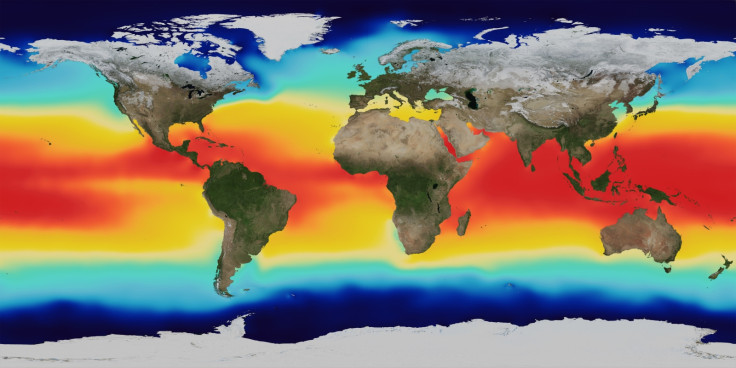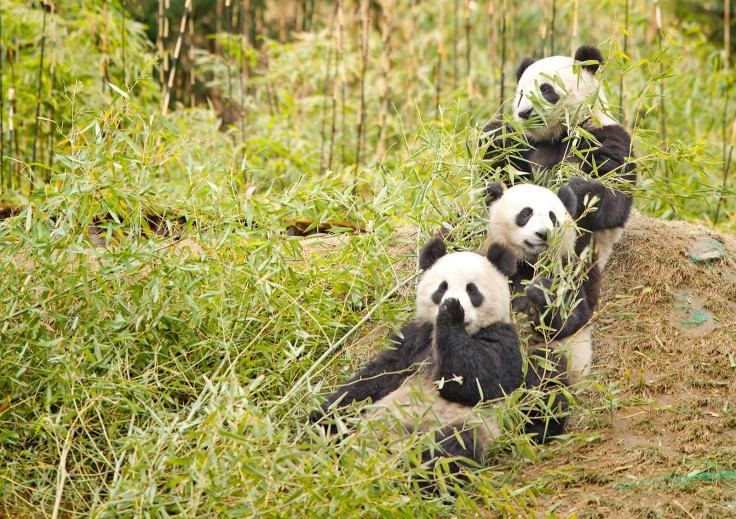Earth Hour 2017: Five reasons to be hopeful for the planet
Top environmental success stories from the past year to think about when the lights go out.
The climate successes of 2016 may have been slightly overshadowed by the election of climate-sceptic Donald Trump. The year also broke a slew of records, from hottest year to lowest winter sea ice extent in the Arctic. But it was also a year of meaningful environmental progress.
Millions of people are set to turn their lights and other non-essential electrics off between 8:30pm and 9:30pm on Saturday 25 March for Earth Hour, to raise awareness of climate change. Here are five reasons for hope to think about when the lights go off.
5. China is stepping up where the US left off
Nearly 200 countries ratified the Paris Agreement, including China and the US. While Trump is threatening to withdraw the US from the agreement, China appears to be taking it seriously.
Even before the agreement, China's carbon emissions dropped in 2015 and 2016, according to the country's National Bureau of Statistics. This overall decrease of 3.7% was equivalent to the entire annual emissions from coal in Japan, Greenpeace noted at the time.
The country's 13th five-year plan sets out targets to reduce air pollution, an energy consumption cap, and improving water and soil quality. Its own targets are set to keep it well within its commitments laid out in the Paris Agreement, China File reported.
The country has a long way to go, with a notorious problem with air quality in China, which is partly due to local emissions and partly due to climate change melting more Arctic ice as a result of global emissions.
4. Two massive protected ocean reserves
Two largest marine protected areas in the world were created in 2016: the Ross Sea MPA and the Papahānaumokuākea Marine National Monument in Hawaii, US.
The Ross Sea MPA is 598,000 square miles, making it the largest marine reserve in the world. The reserve was officially approved in October 2016. It is home to Adélie penguins, Emperor penguins, Antarctic petrels, Antarctic minke whales, killer whales, many species of fish, invertebrates and microorganisms, according to the Antarctic and Southern Ocean Coalition. It is thought to be one of the seas least polluted or disrupted by humans.
The Papahānaumokuākea Marine National Monument was previously the world's largest marine protected area before the Ross Sea MPA was established, at 583,000 square miles. More than 7,000 species live in the reserve, many of them endemic – they don't exist anywhere else in the world, such as the fish Tosanoides Obama, named after the former US president.

3. 21 US young people won the right to have a lawsuit held in federal court
In a landmark case in the US, Judge Ann Aiken ruled that a lawsuit filed by 21 young Americans against the federal government for taking actions that have contributed to climate change.
They are suing the US federal government for taking actions that have contributed to climate change. The government and representatives of the fossil fuel industry in the US filed a motion to dismiss the case without a trial.
In November 2016, Judge Ann Aiken ruled that the case would not be dismissed without a trial, upholding the decision of Magistrate Judge Thomas Coffin, who came to the same conclusion in April 2016.
"Exercising my 'reasoned judgment,' I have no doubt that the right to a climate system capable of sustaining human life is fundamental to a free and ordered society," Aiken stated.

2. Banning microbeads
The tiny beads of plastic called microbeads that are going to be banned in the UK this year. The microbeads are used for exfoliation and abrasion. They're added to shower gels, toothpaste or washing powders.
Microbeads are a problem because they are extremely small. They often wash out from households and pass through the fine filters in sewage treatments works. At sea, they are often eaten by filter-feeding organisms like clams, crabs and krill, and by small fish because they look like food. They then pass up the food chain. Some fish larvae have been shown to prefer microbeads to their natural food, and more than half of all sea turtles have eaten plastic or other rubbish discarded by humans.
The UK government made the announcement in September 2016. The US made the move to remove them from personal care products in 2015, and pledged to phase them out from other products by 2019.
1. Endangered species making come-backs
Tigers are making a steady come-back in Asia. In April 2016 there were an estimated 3,890 tigers in the world, according to WWF, up from less than 3,200 in 2010. In 1900 there were about 100,000 tigers in Asia.
There are several endangered species that are bucking the trend and increasing in numbers. The iconic giant panda is no longer endangered according to the IUCN's Red List, as of September 2016.
"For over 50 years, the giant panda has been the globe's most beloved conservation icon as well as the symbol of WWF. Knowing that the panda is now a step further from extinction is an exciting moment for everyone committed to conserving the world's wildlife and their habitats," said Marco Lambertini, WWF director general in a statement at the time.
The US Department of Interior announced in August 2016 that a total of 19 species had recovered enough to be removed from the endangered list kept under the Endangered Species Act under the Obama Administration. They included three native species of fox.

© Copyright IBTimes 2024. All rights reserved.






